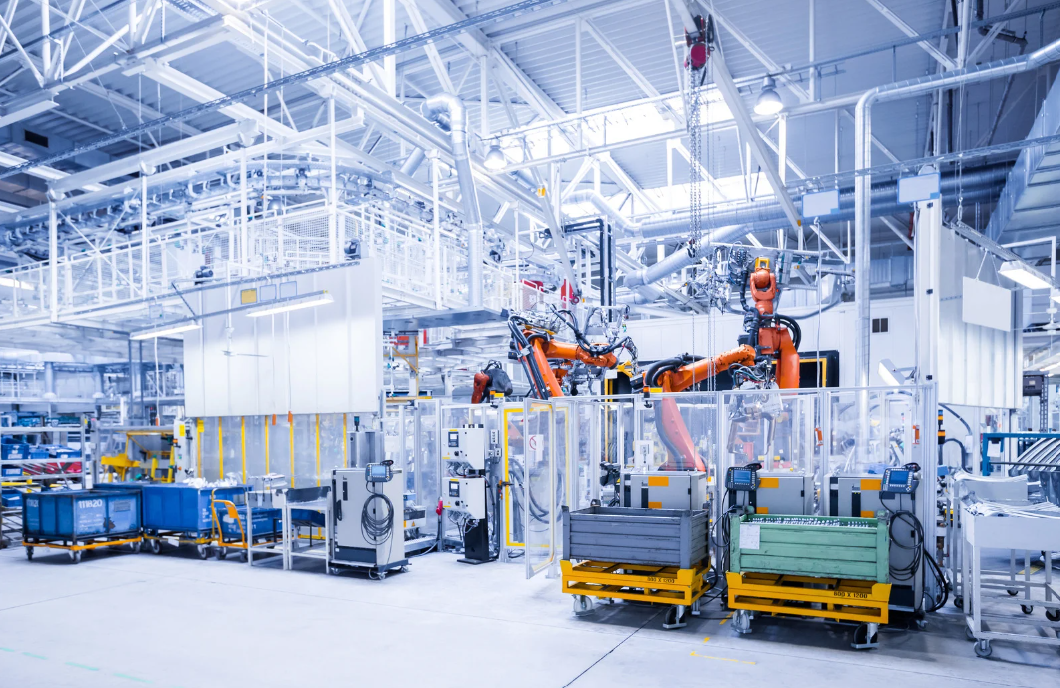News & Blogs
Stay updated with the latest news, insights, and expert blogs from Emixa. Explore industry trends, digital innovations, and company updates all in one place.

- Data Analytics
- AI
Welcoming Wouter Rom Colthoff: Our New Head of Data, AI & Analytics
We’re pleased to welcome Wouter Rom Colthoff as our Head of Data, AI & Analytics at Emixa. In his new role, Wouter will lead our rapidly growing team that helps organisations unlock business value through data, artificial intelligence, and analytics.

- Data Analytics
- FAST
Autohopper: How this no-nonsense car rental company got operational reporting on track
The fast-growing car rental company Autohopper has 130 branches, which together have enabled Autohopper to quickly grow into the number two car rental company in the Netherlands. That makes it essential to have real-time insights into things like occupancy rates and revenue figures. Not only for branch managers, but also for the Autohopper organisation and parent company Louwman Group. We spoke with Carolien Leutscher and Roel Steunenburg (Autohopper) and Jeroen van de Water (Louwman Group). How did they set up operational reporting with meaningful information for all stakeholders?

- Data Analytics
- FAST
Microsoft Fabric: The all-in-one data platform for organisations of any size
A flexible and powerful data platform is now essential to your business operations. Microsoft Fabric promises to be an integrated solution for data engineering, analytics, AI, and business intelligence – all within a single platform. But what exactly does it offer? And in what situations is Microsoft Fabric the best choice? Consultants Jesper Kerstens and Daan Stolker guide you through the pros and cons of Microsoft Fabric.

- Data Analytics
- hackathon
- +1
Unlocking innovation: Lessons from Emixa’s Advanced Analytics Hackathon

- Data Analytics
- ERP Software
5 Questions About SAP Business Data Cloud: The Collaboration Between SAP and Databricks
SAP and Databricks have recently launched SAP Business Data Cloud (BDC), a powerful data solution. Designed for businesses that use SAP and want to make better use of their data. It allows companies to seamlessly combine operational SAP data with the modern Databricks platform.

- Data Analytics
Engineering and Manufacturing Demand a Central Data Platform
Consumers increasingly demand new product variations. To meet this demand, machine builders and high-tech suppliers must dramatically accelerate innovation and production. Designing, building and testing new machines – or modifying existing ones – can happen much faster when all company departments interlink data. Or better yet – centralise all data. Does your firm have a shared data repository? It will come as no surprise that consumer demand directly impacts suppliers. The growing consumer demand for new product variations results in shorter product life cycles. This means that new products, and consequently machines, need to come to market faster. To stay ahead of the competition, manufacturing companies must be able to cope with this increasing pressure on time-to-market. And that’s not all. Customers not only expect faster delivery of new machines, but also demand simultaneous improvements in quality and reductions in cost compared to previous versions. This pressures machine builders to enhance flexibility and efficiency across design, testing, and production. Only by optimising these critical processes can they stay competitive. Data in silos Digitisation is key here. The presence of a 360° view throughout the entire product lifecycle – from design to production and after-sales service – ensures optimal collaboration across all departments for effective product development. The end goal is staying ahead of the competition. Now, let's shift to the practical scenario. Business departments still often operate in silos, each equipped with its own systems and data. Once the product design is completed, engineering colleagues metaphorically toss the design over the dividing wall to the production department, which operates with its unique set of systems or, at times, relies on traditional tools like Excel, pen, and paper. There is no automatic flow of data between the departments. Drawing from personal experience, I've observed that engineering is frequently advanced in terms of digitalisation. However, a brief visit to the production department reveals a different story: paper-based work instructions, scattered emails, and Excel sheets dominate the landscape. The considerable investment in engineering digitisation doesn't reach its full potential unless production similarly embraces digital integration. Brakes on efficiency The lack of digital alignment between engineering and production can significantly impede the efficiency and flexibility that the company so desperately needs. Non-integrated, paper-based workflows make it challenging to provide feedback from production to engineering. Connecting with ERP systems proves difficult, requiring manual transcriptions of paper slips and bringing the risk of errors. Plus, there's no clear view of the production run status, delivered quality, errors, interruptions, and the like. Without exaggeration, engineers in such environments can dedicate up to 50% of their time to data collection and validation. When production alterations are required, the disjointed data systems often lead to unnecessary hours spent syncing updates. The lack of digital data flow also limits visual operations in production due to the absence of a link with engineering's 3D data. All these factors contribute to extended lead times. Shared data platform A company aiming to streamline engineering and production can achieve this by initially establishing a shared data platform. Goodbye to silos! Once the data is centrally available, the departments can collaborate more seamlessly. This leads to a quicker time-to-market, fewer issues related to production quality, and reduced recalls. In my opinion, digitalisation in this context begins with a unified repository for documents and bill of materials, alongside all mechanical, electronic, software, and simulation data. This single source of truth provides a solid foundation to optimise collaboration between departments, addressing the efficiency and flexibility of your Product Lifecycle Management strategically. Get in touch Curious about our advice on streamlining your Product Lifecycle Management? Contact us, and we’ll provide you with all the details.

- Data Analytics
- Data Management
Process Optimization in Service and Maintenance with Process Mining
Do you also notice that cooperation in the entire chain of service and maintenance processes is complex? Asset-intensive companies often have to deal with many different chain partners who are involved in both service and maintenance. They all need to communicate with each other. But how do you optimize all these internal and external processes? This starts with the right insight. And that is exactly where Process Mining offers the solution.

- Construction & Infrastructure
- Data Analytics
- +1
Generative AI in Public Transport: From Concept to Connected Support
A public city transport company transports around hundred thousands of people per day via its trams and buses. The company wanted to learn about and experiment with using generative AI. Which uses could be of added value to its daily operations and people? Emixa supported the company in taking those first steps and using generative AI.

- Manufacturing
- Data Analytics
Generative AI in Engineering: Transforming Services and Innovation
This innovative process engineering company specialises in the end-to-end delivery of processing systems. Its services range from the design of bespoke machines to its installation onsite to various maintenance services. The company is always on the lookout to improve its services. How can it improve its troubleshooting and maintenance activities and offer added value for clients?